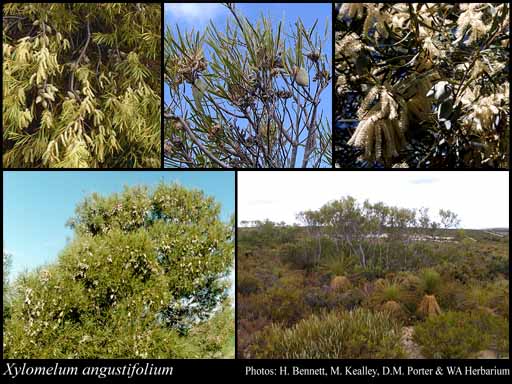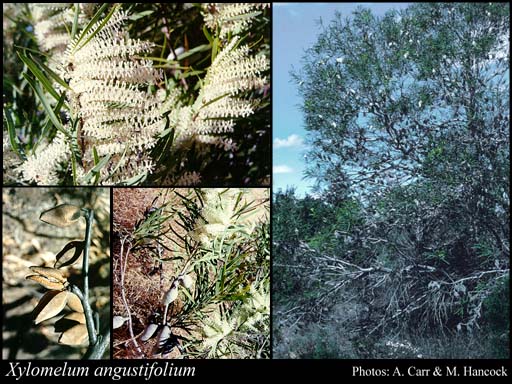- Reference
- A.DC., Prodr. 14:423 (1856)
- Conservation Code
- Not threatened
- Naturalised Status
- Native to Western Australia
- Name Status
- Current
Non-lignotuberous shrub or tree, 2-7(-10) m high. Fl. cream-white, Sep or Dec or Jan to Feb. White/yellow sand. Sandplains.


Scientific Description
Trees, 3-10 m high; branchlets glabrous, not ribbed. Leaves alternate, 80-150 mm long, 6-10 mm wide, glabrous; lamina flat, widest around the middle or more or less the same width throughout, entire, the margins flat. Inflorescences not viscid, white or cream. Perianth 6.5-8 mm long; tepals all free after flower opens, hairy, simple-hairy, the hairs spreading, the limb apex hairy all over; ovary hairy, sessile; pistil 6.5-8 mm long, style hairy or glabrous. Follicles glabrous, not viscid, dehiscent, 60-80 mm long. Flowers in January, February, September or December. Occurs in the South-west (SW) Botanical Province(s), in the Geraldton Sandplains (GS), Swan Coastal Plain (SWA), Avon Wheatbelt (AW), Jarrah Forest (JF) or Mallee (MAL) IBRA subregion(s).
Distribution
- IBRA Regions
- Avon Wheatbelt, Geraldton Sandplains, Jarrah Forest, Mallee, Swan Coastal Plain.
- IBRA Subregions
- Dandaragan Plateau, Geraldton Hills, Katanning, Lesueur Sandplain, Merredin, Northern Jarrah Forest, Perth, Western Mallee.
- Local Government Areas (LGAs)
- Bruce Rock, Carnamah, Chapman Valley, Chittering, Coorow, Corrigin, Dandaragan, Dowerin, Goomalling, Greater Geraldton, Kellerberrin, Kondinin, Kulin, Merredin, Moora, Northampton, Perenjori, Quairading, Shark Bay, Swan, Tammin, Wongan-Ballidu, Wyalkatchem.